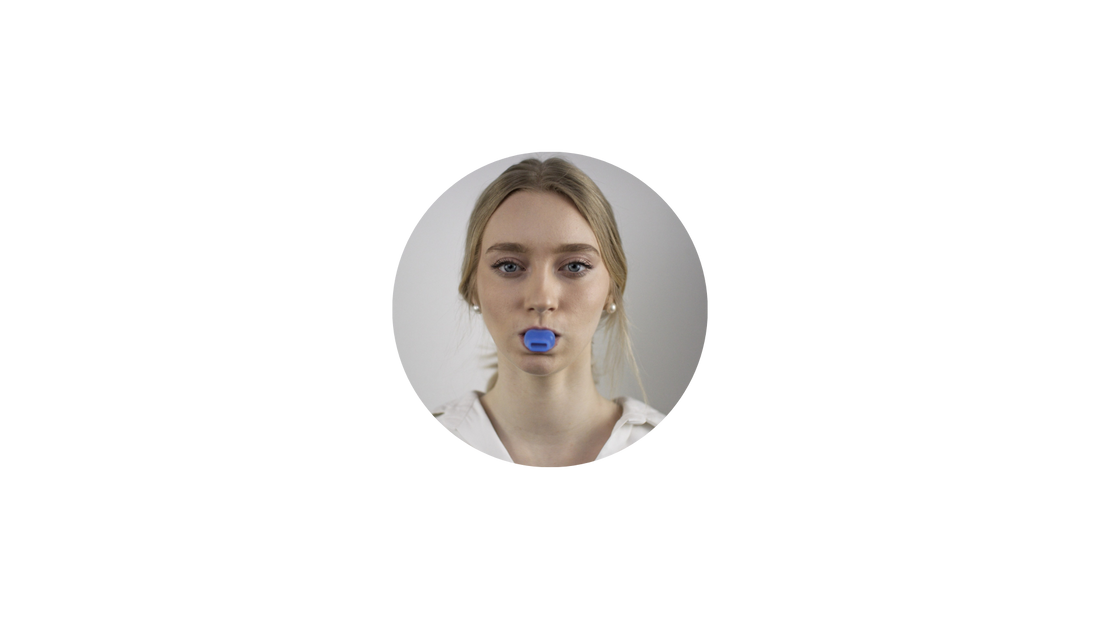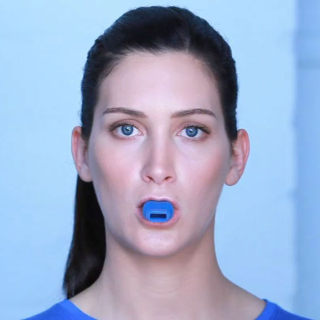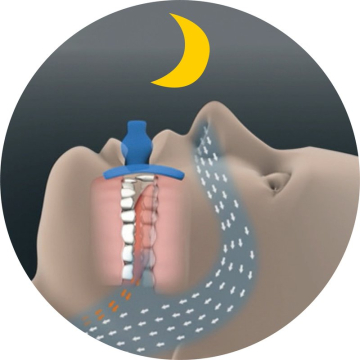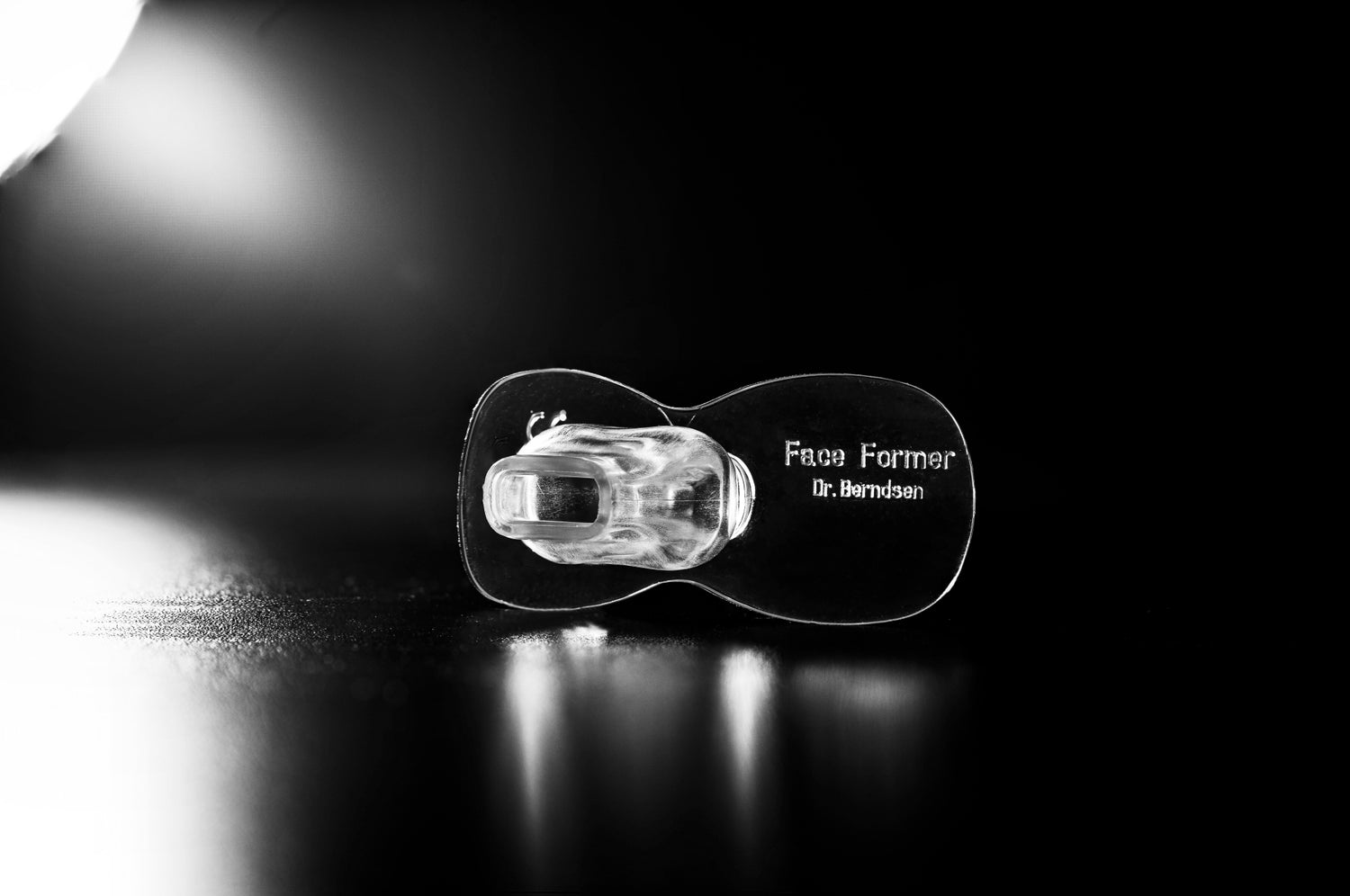Regular FaceFormer training has an effective influence on cranial nerve functions and brain performance, on pattern formation and coordination, on the tension of tissue, muscles and skin in the mouth, throat and facial regions, on body statics, body movements and sensory performance. However, causal therapies such as FaceFormer Therapy do not produce results overnight. Rather, constant practice brings about a gradual approach to the desired goal until what has been achieved is finally stabilized in the long term. This avoids ongoing dependence on stressful medications and annoying aids.
FaceFormer® training is effective
FaceFormer exercises are easy to perform and achieve quick results with little effort. The first results can often be felt after just a few days. Good development can usually be expected after about 6-10 weeks with daily training. Now stay consistently on the ball! The new movement and behavior patterns are practiced and automated until they become second nature. The exercises should be carried out for a total of six months. Then you can avoid regular use of the FaceFormer.
Perseverance is worth it
Experience has shown that FaceFormer therapy often brings about noticeably positive changes after a short period of time. In order to stabilize the success in the long term, the application must be carried out over the intended period of time. When physiological movement patterns, postures and muscle tension have finally become automatic, the therapy is complete and your perseverance will pay off!
Exercise instructions
Successful entry into FaceFormer training
Step 1: Starting position
Step 1 – Starting position
Placing the FaceFormer
The FaceFormer is placed in the vestibule of the mouth.
- The FaceFormer membrane (mouth shield) lies behind the lips and in front of the teeth (oral vestibule).
- The lip wedge is directed outwards.
- The lips lie relaxed around the lip wedge.
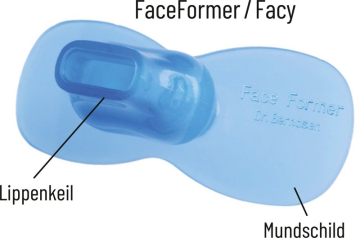
The FaceFormer according to Berndsen/Berndsen with lip wedge and mouth shield (membrane)

The FaceFormer is inserted into the vestibule of the mouth.
Position of the tip of the tongue
- The tip of the tongue rests on the roof of the mouth a few millimeters behind the upper incisors.
- The tip of the tongue feels a small bulge here. She doesn't touch her teeth.
- The position of the tip of the tongue is always maintained. It is part of the natural, correct tongue posture and can be reliably habituated.
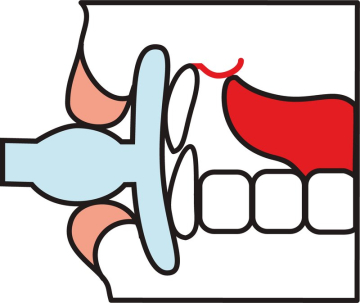
Correct position of the tip of the tongue
Head posture, neck extension and nasal breathing
The head is erect and the neck stretched. This natural, correct head position is always maintained and must become a habit. It determines head balance, posture and body statics.
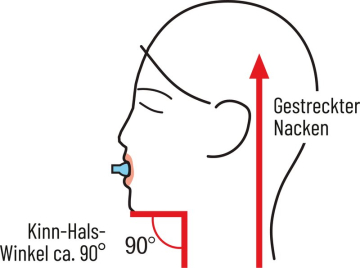
Head erect and neck stretched
Lower jaw posture
The upper incisors lie in front of the lower ones.*
The lower jaw is not displaced.
When swallowing, the usual bite position must be maintained.
The lip wedge of the FaceFormer is aligned horizontally.
* Exception: If the lower jaw is moved forward, the usual position can be maintained.
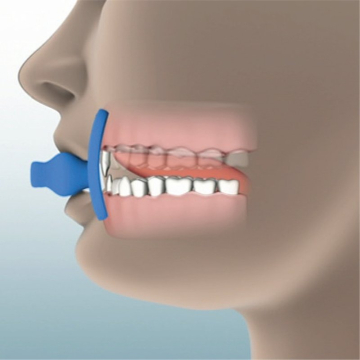
Upper incisors lie in front of the lower ones
Nose breathing is a must
Nasal breathing is crucial for health. FaceFormer training makes it systematic
developed.
Nose breathing has to become habitual and automatic, unconsciously and even while sleeping.
Step 2 – Exercises
Basic exercise
- Press the lip wedge together firmly with your lips for 6 seconds. (Image A)
- Maintain lip tension.
Bite down once with your molars and swallow once at the same time.
Maintain the position of the tip of the tongue. - Relaxation phase: release lip pressure.
Lips enclose lip wedge without pressure.
Teeth don't touch each other. (Picture B)

A) Press your lips
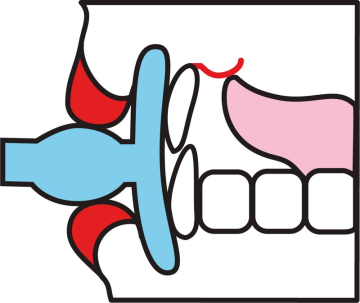
B) Relax lips

Pulling exercise
- Press the lip wedge together firmly with your lips for 6 seconds.
Pull the lip wedge forward with your thumb and index finger. - Maintain lip tension.
Bite down once with your molars and swallow once at the same time.
Maintain the position of the tip of the tongue. - Relaxation phase: release lip pressure.
Lips enclose lip wedge without pressure.
Teeth don't touch each other.
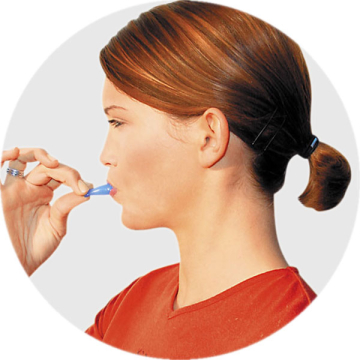
Pull exercise – pull forward


